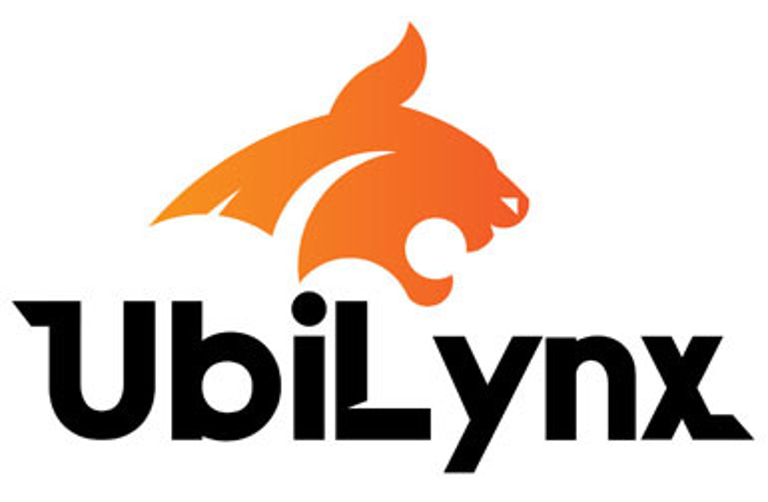Onsite Surveys Simplified !
Site Surveys
2/9/20254 min read


At Ubilynx, we offer comprehensive site survey services tailored to various business environments, including data centers, retail spaces, offices, and more. Below are examples of checklists for different types of site surveys. These can all be adjusted to fit your particular requirements.
General Survey Sample:
1. Infrastructure & Connectivity
Internet Service Provider (ISP) Availability – Check for high-speed and redundant internet options.
Fiber vs. Copper vs. Wireless – Evaluate what types of connectivity are available.
WAN & LAN Connectivity – Plan for network topology, including VPNs, SD-WAN, or MPLS if needed.
Power Supply & Backup – Ensure a stable power source with UPS and generator backup.
Cooling & Environmental Controls – Especially for server rooms and data centers.
2. Physical & Environmental Considerations
Site Accessibility – Ensure the site is easy to reach for maintenance and support.
Building Infrastructure – Check if the building can support necessary cabling and equipment.
Potential Interference – Avoid sites with high levels of wireless interference.
Security Risks – Assess the neighborhood and site security (e.g., theft, vandalism).
3. Network Performance & Scalability
Bandwidth Requirements – Ensure the network can support current and future data needs.
Latency & Jitter – Important for VoIP, video conferencing, and cloud applications.
Scalability – Plan for future growth and additional network devices.
4. Security & Compliance
Physical Security – Implement access control, surveillance, and monitoring.
Cybersecurity Measures – Firewalls, endpoint protection, and intrusion detection.
Regulatory Compliance – Ensure adherence to industry-specific regulations (e.g., HIPAA, GDPR, PCI-DSS).
5. Wireless & IoT Readiness
Wi-Fi Coverage & Density – Perform a site survey for optimal AP placement.
Device Compatibility – Ensure support for IoT, VoIP, and other smart technologies.
RF Spectrum Analysis – Avoid congested wireless channels.
6. Budget & Operational Costs
Upfront Costs – Hardware, software, cabling, and installation expenses.
Ongoing Costs – ISP fees, maintenance, licensing, and energy consumption.
ROI & Justification – Ensure the site location aligns with business needs.
Data Center Site Survey Checklist
1. Location & Accessibility
✅ Proximity to business operations or headquarters
✅ Accessibility for staff, vendors, and emergency responders
✅ Secure entry points and visitor control measures
✅ Risk assessment for natural disasters (floods, earthquakes, storms)
✅ Availability of parking and loading dock for equipment deliveries
2. Power & Electrical Infrastructure
✅ Dual or redundant power feeds from separate substations
✅ Availability of Uninterruptible Power Supply (UPS) systems
✅ Backup generators with adequate fuel supply
✅ Power distribution units (PDUs) and circuit redundancy
✅ Grounding and surge protection
✅ Compliance with energy efficiency standards (e.g., LEED, Energy Star)
·3. Cooling & Environmental Controls
✅ Redundant HVAC systems (N+1 or better)
✅ Hot and cold aisle containment
✅ Airflow management and temperature monitoring
✅ Humidity control systems
✅ Fire suppression systems (FM-200, Halon alternatives)
✅ Leak detection and drainage solutions
4. Network & Connectivity
✅ Availability of multiple fiber providers (carrier diversity)
✅ Latency and bandwidth capacity testing
✅ Redundant ISP paths and connections
✅ Structured cabling and fiber termination options
✅ Secure networking infrastructure (firewalls, SD-WAN, VLANs)
✅ Remote management and monitoring capabilities
5. Physical Security & Compliance
✅ 24/7 security personnel and surveillance cameras
✅ Access control (biometrics, key cards, multi-factor authentication)
✅ Secure cages and racks for colocation spaces
✅ Compliance with industry standards (ISO 27001, SOC 2, HIPAA, PCI-DSS)
✅ Audit logs and compliance reporting capabilities
✅ Disaster recovery and business continuity plans
6. Fire & Safety Measures
✅ Fire-rated walls, doors, and suppression systems
✅ Early smoke detection systems (VESDA, HSSD)
✅ Emergency shutdown procedures
✅ Adequate exits and emergency lighting
✅ Staff fire safety training and compliance
7. Scalability & Expansion
✅ Available space for future growth (floor space, rack density)
✅ Expansion capabilities for power and cooling
✅ Support for high-density computing (AI, HPC, cloud services)
✅ Compliance with future sustainability and efficiency goals
8. Operational & Maintenance Considerations
✅ Onsite staff availability (network engineers, facility managers)
✅ Maintenance contracts for critical systems (UPS, HVAC, fire suppression)
✅ Remote hands service availability
✅ Real-time monitoring tools and dashboards
✅ Vendor SLAs for power, cooling, and network uptime
Office Network Site Survey Checklist
1. Location & Building Infrastructure
✅ Accessibility for employees, visitors, and IT support staff
✅ Availability of secure parking and delivery areas
✅ Structural integrity for network cabling and equipment installation
✅ Compliance with local building codes and IT infrastructure requirements
✅ Availability of dedicated server/network rooms
2. Power & Electrical Infrastructure
✅ Reliable power supply with adequate circuits for IT equipment
✅ Redundant power sources or backup generators (if needed)
✅ Uninterruptible Power Supply (UPS) for critical devices
✅ Surge protection and grounding systems
✅ Energy efficiency considerations for cost management
3. Network & Connectivity
✅ ISP availability and bandwidth options
✅ Redundant ISP connections for failover
✅ Structured cabling (Cat6, Cat6A, or fiber) for wired networks
✅ Patch panels, switches, and network closets for organization
✅ Network topology planning (LAN, WAN, VPN requirements)
✅ Secure access to cloud-based applications and VoIP systems
4. Wireless Network (Wi-Fi) Coverage
✅ Wi-Fi site survey for optimal access point placement
✅ Dual-band Wi-Fi (2.4GHz & 5GHz) with sufficient coverage
✅ Guest Wi-Fi network with separate VLAN and security policies
✅ Network segmentation for different departments (e.g., HR, IT, Finance)
✅ Security features (WPA3, MAC filtering, firewall rules)
5. Physical Security & Compliance
✅ Secure access control (keycards, biometrics, PIN-based entry)
✅ CCTV surveillance coverage in critical areas
✅ Secure storage for IT equipment and sensitive documents
✅ Compliance with data security standards (ISO 27001, HIPAA, PCI-DSS)
✅ Emergency exit and disaster recovery planning
6. Server Room / IT Closet Considerations
✅ Dedicated space with controlled access
✅ Adequate ventilation and cooling (HVAC or dedicated AC units)
✅ Proper rack setup and cable management
✅ Backup power supply (UPS, generators)
✅ Fire suppression system (FM-200, Halon alternatives)
7. VoIP & Communication Systems
✅ VoIP readiness with proper QoS configuration
✅ Conference room audio-visual setup (video conferencing, screens, projectors)
✅ Unified Communications (Microsoft Teams, Zoom, Webex, etc.)
✅ Desk phone vs. softphone deployment planning
8. IoT & Smart Office Considerations
✅ Smart access control and building automation compatibility
✅ IoT device security (smart locks, cameras, thermostats)
✅ Wireless network segmentation for IoT devices
✅ Monitoring and logging for connected devices
9. Employee Workstations & End-User Experience
✅ Ergonomic workstation layout with proper network ports
✅ Sufficient power outlets and surge protectors
✅ Secure BYOD (Bring Your Own Device) policy enforcement
✅ Compliance with accessibility standards (ADA, workstation height, etc.)
10. Scalability & Future Growth Planning
✅ Additional space for employee and device growth
✅ Expansion considerations for new network hardware
✅ Cloud vs. on-premises service flexibility
✅ Budget planning for future IT upgrades
Take Control of Your Network Today!
Partner with Ubilynx to handle your site survey requirements.
Contact us today to schedule a consultation and see how Ubilynx simply your site survey needs.
Email: contact@ubilynx.com or call 331-215-9440 to tall with an Engineer

